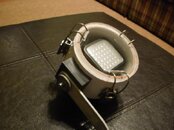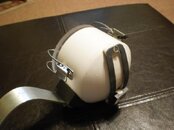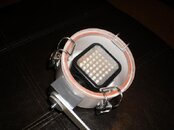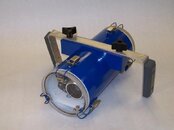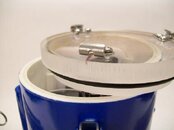Guba
Contributor
This will most likely get moved to the DIY or photography forum, but I wanted my interested friends here to see what I've been working on in my workshop. It's an UW video/fill lamp using a very inexpensive, 36 LED array that produces 600 lumens at 5600 K. With a little re-wiring, it turns on and off underwater using a magnetic reed switch, and there are no screws or other punctures to the housing. I'll be using two of these in tandem. Hopefully, they'll provide the light I need for short-range videography.
